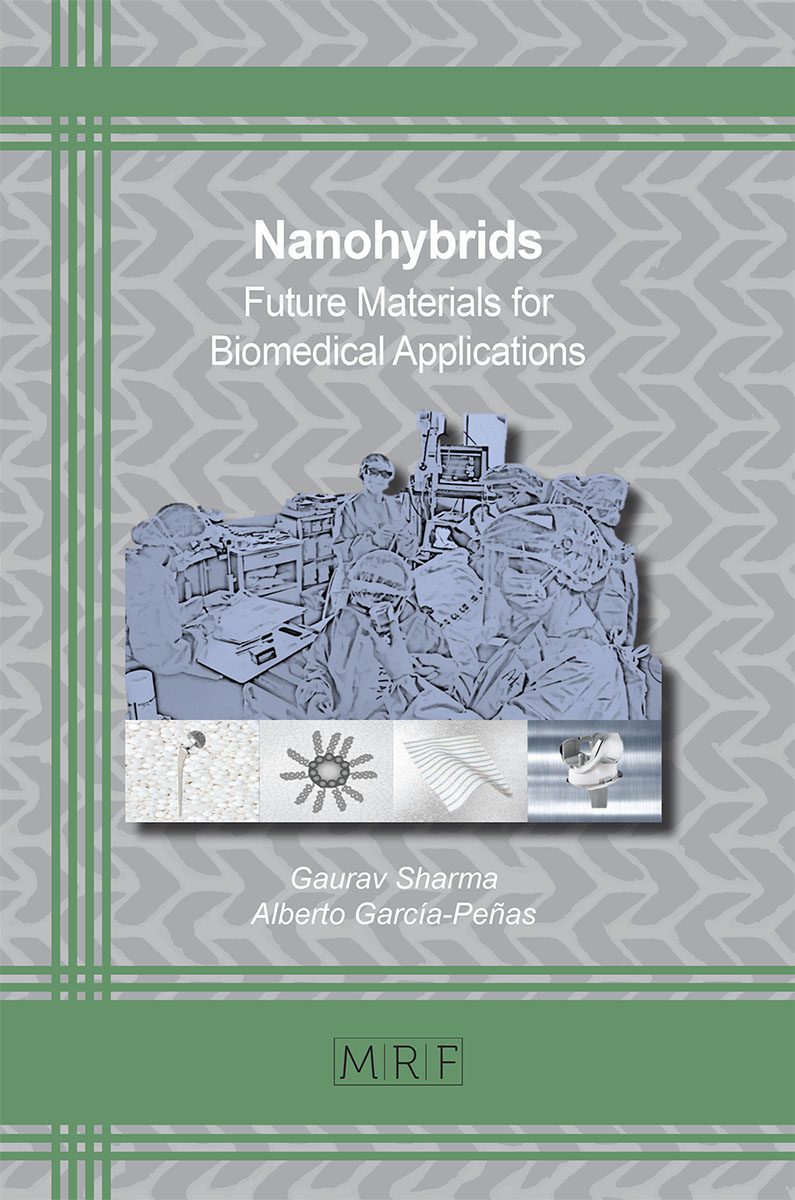Biomaterials for Cell Regeneration
A. Saravanan, P. Senthil Kumar, R.V. Hemavathy, S. Jeevanantham
Biomaterial sciences approaches are as of now crucial systems for the improvement of regenerative cell and medication. Present day material advances take into consideration the improvement of inventive biomaterials that nearly compare to prerequisites of the current biomedical application. A few biomaterials helpful for unmistakable applications in restorative sciences, incorporating into tissue repair and organ reproduction. Natural materials for example, agarose, collagen, alginate, chitosan or fibrin completely coordinate with living tissues of the beneficiary and have low cytotoxicity. Biomaterials, for example, ceramics and metals, are now utilized as inserts to supplant or enhance the usefulness of the harmed tissue or organ. Additionally, the constant advancement of present day innovation opens new experiences of polymeric and smart material applications. Biomaterials may improve the immature microorganisms organic movement and their usage by setting up an explicit microenvironment emulating characteristic cell specialty.
Keywords
Biomaterials, Cell Regeneration, Tissue, Cytotoxicity, Bioengineering
Published online 11/20/2020, 14 pages
Citation: A. Saravanan, P. Senthil Kumar, R.V. Hemavathy, S. Jeevanantham, Biomaterials for Cell Regeneration, Materials Research Foundations, Vol. 87, pp 55-68, 2021
DOI: https://doi.org/10.21741/9781644901076-2
Part of the book on Nanohybrids
References
[1] L.P. Datta, S. Manchineella, T. Govindaraju, Biomolecules-derived Biomaterials, Biomaterials, (2019) 119633. https://doi.org/10.1016/j.biomaterials.2019.119633
[2] H. Xing, H. Lee, L. Luo, T.R. Kyriakides, Extracellular matrix-derived biomaterials in engineering cell function, Biotechnology Advances, (2019) 107421. https://doi.org/10.1016/j.biotechadv.2019.107421
[3] F. Klingberg, G. Chau, M. Walraven, S. Boo, A. Koehler, M.L. Chow, A.L. Olsen, M. Im, M. Lodyga, R.G. Wells, E.S. White, B. Hinz, The fibronectin ED-A domain enhances recruitment of latent TGF-β-binding protein-1 to the fibroblast matrix, Journal of Cell Science, 131 (2018) 1-12. https://doi.org/10.1242/jcs.201293
[4] M.C. Moore, A. Van De Walle, J. Chang, C. Juran, P.S. McFetridge, Human perinatal-derived biomaterials, Advanced Healthcare Materials, 6 (2017) 130–135. https://doi.org/10.1002/adhm.201700345
[5] F.W. Meng, P.F. Slivka, C.L. Dearth, S.F. Badylak, Solubilized extracellular matrix from brain and urinary bladder elicits distinct functional and phenotypic responses in macrophages, Biomaterials 46 (2015) 131–140. https://doi.org/10.1016/j.biomaterials.2014.12.044
[6] A.R. Santos Jr, V.A. Nascimento, S.C. Genari, C.B. Lombello, Mechanisms of Cell Regeneration — From Differentiation to Maintenance of Cell Phenotype. Cells and Biomaterials in Regenerative Medicine, (2014). https://doi.org/10.5772/59150
[7] D.S. Adams, A. Masi, M. Levin, H+pump-dependent changes in membrane voltage are an early mechanism necessary and sufficient to induce Xenopus tail regeneration, Development, 134 (2007) 1323-35. https://doi.org/10.1242/dev.02812
[8] Y. Imokawa, A. Simon, J.P. Brockes, A critical role for thrombin in vertebrate lens regeneration, Philosophical Transactions of the Royal Society of London. Series B, Biological Sciences. Preface, 359 (2004) 765-776. https://doi.org/10.1098/rstb.2004.1467
[9] L.J. Campbell, C.M. Crews, Molecular and cellular basis of regeneration and tissue repair: wound epidermis formation and function in urodele amphibian limb regeneration, Cellular and Molecular Life Sciences, 65 (2008) 73-79. https://doi.org/10.1007/s00018-007-7433-z
[10] Y. Su, I. Cockerill, Y. Wang, Y.-X. Qin, L. Chang, Y. Zheng, D. Zhu, Zinc-Based Biomaterials for Regeneration and Therapy, Trends in Biotechnology, 37 (2018) 428-441. https://doi.org/10.1016/j.tibtech.2018.10.009
[11] A.L. Facklam, L.R. Volpatti, D.G. Anderson, Biomaterials for personalized cell theraphy, Advanced Materials, (2019) 1902005. https://doi.org/10.1002/adma.201902005
[12] R. Chen, L. Li, L. Feng, Y. Luo, M. Xu, K.W. Leong, R. Yao, Biomaterial-assisted scalable cell production for cell therapy, Biomaterials, 230 (2020) 119627. https://doi.org/10.1016/j.biomaterials.2019.119627
[13] H. Kim, S.L. Kim, Y.H. Choi, Y.H. Ahn, N.S. Hwang, Biomaterials for stem cell therapy for cardiac disease, Advances in Experimental Medicine and Biology, 1064 (2018) 181-193. https://doi.org/10.1007/978-981-13-0445-3_11
[14] Y. Xu, C. Chen, P.B. Hellwarth, X. Bao, Biomaterials for stem cell engineering and biomanufacturing, Bioactive Materials, 4 (2019) 366–379. https://doi.org/10.1016/j.bioactmat.2019.11.002
[15] Z. Cui, B. Yang, R.K. Li, Application of Biomaterials in Cardiac Repair and Regeneration, Engineering, 2 (2016) 141–148. https://doi.org/10.1016/J.ENG.2016.01.028
[16] H. Wang, Y. Li, Y. Zuo, J. Li, S. Ma, L. Cheng, Biocompatibility and osteogenesis of biomimetic nano-hydroxyapatite/polyamide composite scaffolds for bone tissue engineering, Biomaterials, 28 (2007) 3338–3348. https://doi.org/10.1016/j.biomaterials.2007.04.014
[17] D. Chouhan, B.B. Mandal, Silk Biomaterials in Wound Healing and Skin Regeneration Therapeutics: from Bench to Bedside. Acta Biomaterialia. (2019). https://doi.org/10.1016/j.actbio.2019.11.050
[18] B. Zhang, J. Huang, R. Narayan, Nanostructured biomaterials for regenerative medicine: Clinical perspectives, Nanostructured Biomaterials for Regenerative Medicine, (2020) 47–80. https://doi.org/10.1016/B978-0-08-102594-9.00003-6
[19] A.K. Gaharwar, P.J. Schexnailder, B.P. Kline, G. Schmidt, Assessment of using Laponite cross-linked poly(ethylene oxide) for controlled cell adhesion and mineralization, Acta Biomaterialia, 7 (2011) 568–577. https://doi.org/10.1016/j.actbio.2010.09.015
[20] D.S. Couto, N.M. Alves, J.F. Mano, Nanostructured multilayer coatings combining chitosan with bioactive glass nanoparticles, Journal of Nanoscience Nanotechnology. 9 (2009) 1741–1748. https://doi.org/10.1166/jnn.2009.389
[21] I. Ajioka, Biomaterial-engineering and neurobiological approaches for regenerating the injured cerebral cortex, Regenerative Therapy, 3 (2016) 63–67. https://doi.org/10.1016/j.reth.2016.02.002































